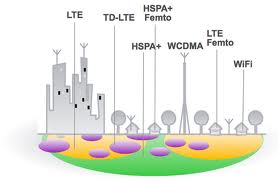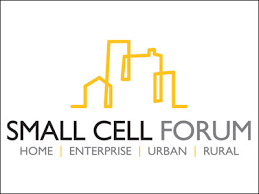 The other day I was sitting with a leading telecom infra company provider’s planning head, who quite enthusiastically pointed me to help him in understand why everyone wants Wi-Fi these days. After long discussion, he finally agreed upon to take a case of Wi-Fi further & promised to get back to me.
The other day I was sitting with a leading telecom infra company provider’s planning head, who quite enthusiastically pointed me to help him in understand why everyone wants Wi-Fi these days. After long discussion, he finally agreed upon to take a case of Wi-Fi further & promised to get back to me.
He’s not alone as many telcos & telecom infra providers are actively engaged in counseling with solution providers across globe. Number of reasons- monetizing data, improve coverage indoor, build capacity & at the end drive more revenues from network rollout. All got similar issues at hand to address but solution might differ from company’s objectives on technology front.
I long cherished the idea of using technology to find solution to problems telcos are facing. While days of rollout of massive outdoor towers are gone, industry is more concerned about present state of telecom & advancing 4G technology. Those who got licenses are well ahead of curve but those who didn’t participate, are also concerned about the impact of new technology on their business model.
Presently, as reported, many leading telcos are conducting trials of Femto cells. Companies like NEC & ip Access have been engaged with multiple players but till date we have to hear about successful deployments of Femto Cells in India. Albeit trials, many telcos have chosen IBS-DAS route to start with, Wi-Fi deployments have also peaked in recent times.
There’re various solutions available in market for Indoor Coverage problems inside large indoor venues, high rise apartments, public spaces & mix deployment scenarios. While from operator’s perspective, acquiring a venue takes huge sums of money, generating revenues from such acquisition had always been a challenge. While IBS (Passive Infra) is still preferred choice of telecom infra deployment, the solution becomes ineffective when multiple operators starts combining their BTS into installed infrastructure.
In recent time, leading operators like Airtel, Voda & Idea Cellular have all started deploying outdoor & indoor Wi-Fi hotspots. The problems with Wi-Fi are interference & monetization of data. While sole purpose of going with Wi-Fi technology (carrier grade?) is offloading data on overloaded BTS cheaper way, Wi-Fi comes handy with many rich features which current 3GPP standard doesn’t support. Especially with static traffic, looking for quick downloads & easy access, solution of deploying Wi-Fi comes handy, as it’s easy to deploy, low in cost & requires little maintenance. But there’re inherent challenges to this plan also.
Looking at Small Cells, one of the leading telecom daily has already reported on preparedness of Indian telcos for the technology at present. But Small Cells, as again have their own advantages & dis-advantages. One of the major challenges faced with deployment of Small Cells is backhaul connectivity to these cells. While security, power & monetization remain other couple of them to solve, there’re multiple solutions offered by various global vendors available in the market. While some of them are proven, in Indian context, the challenges are different and soon we would get dramatic deployments of these Small Cells on public utility poles, high rise apartment passage areas, inside lifts or even public coffee shops.
While Active IBS-DAS, another solution offered for Indoor coverage has found few takers among telcos, the solution was widely deployed at venues with 5,00,000 sq feet or more area by infra providers. Among Telecom Infra Players, Cellcomm, Ubico, GRNL & Kaveri Telecom, all have deployed such Active DAS Solutions partnering with technology providers at back end. Venues such as Airports, Big Multiplexes & Shopping Centers, large hospitality venues and couple of hospitals have deployed such solution, the trend is moving towards ‘Unified Communication Infrastructure’, where single communication infra would serve all types of communication requirements inside a particular venue. There are various solutions available for Unified Communication, integrating telecom onto them remains challenging.
In recent times, with dropped prices of fibre infrastructure components (GPON), FTTX i.e. Fibre To The Curb/Home/Floor/Building has shown rise in deployments amid lots of challenges. FTTx, mainly carries Triple Play Traffic i.e. Voice (IP PBX), Video (IPTV) & Internet). The challenging parts of FTTx deployment inside residential complexes remains unresolved, the cost of deployment still requires break-even beyond four years. Moreover, integrating DTH & Telecom Signals on FTTx infrastructure remains challenging & costly affair.
With multiple solutions pitched by various technology vendors, the scenario is getting quite complex & telecom India has already moved on to Het-Net Network management era. From a telecom operator’s perspective, there lay enough challenges to move from single technology (2G) with single vendor solution to integrate multiple technologies with multiple vendor solutions from deployment, integration, management & monetization perspective. Operators are quite open and willing to address the challenges faced by growth of data traffic, but quite cautious in deployment of new technology.
With the advent of 4G/LTE in India, the situation is changing fast. At present, RIL Jio, the only pan India license holder has moved on aggressively for deployment of LTE Infrastructure, the ecosystem challenges remain to be addressed. The most significant would be the devices ecosystem, where in we still don’t have any TD-LTE Handsets available in market. Whatever 4G deployments till date have happened purely from Data Dongles perspective & remains cluttered, roaming pacts for seamless accessibility will remain again challenge to address amid regulator’s nasty clauses & scrutiny perspective.
Indian Telecom fraternity has come long way in past 15 years since inception of telecom era & past 3 years were and next 5 years will be definitive in terms of addressing the challenges emerged. While M&A has started paving ways in telecom infra space, operators are still in need of partners, either on technology side & services side, who would carry the burden of on-field proven solutions at their own costs. The mindsets have changed & it remains to see on how entire eco-system players fit into these spaces to address the challenges of industry.
One threat that has emerged to these all solutions is the awareness of public to radiation norms of telecom towers. The threat has grown such bigger in past one year’s time, that majority of telcos have already started feeling the heat of public outrages over telecom tower radiations. Albeit DoT’s action plan & forming separate solutions to investigate such claims, operators don’t find it easy to find fit between finding solution to indoor coverage & meeting regulator’s norms. It’s catch 22 situation.
In the end, as we moved from outdoor to indoor challenges, apart from EMF norms, another threat looms large, which might offset all advantage we have in terms of numbers . It’s Regulator & Policymaking. With no clear guidelines for equipping telecom industry for next wave of data revolution, present & past issues have marred the pace of growth. The appetite of industry is waning to such no-nonsense threat but little had been done by regulator to restore faith of industry.
About Author:
Atul Deshpande, is founder & Writer at Telecomblogs. He specializes in Indoor Solution Consultancy where challenges are plenty. At present, he’s involved into forming indoor solution strategy with leading infra & telecom players in India.
You can reach him at [email protected]

